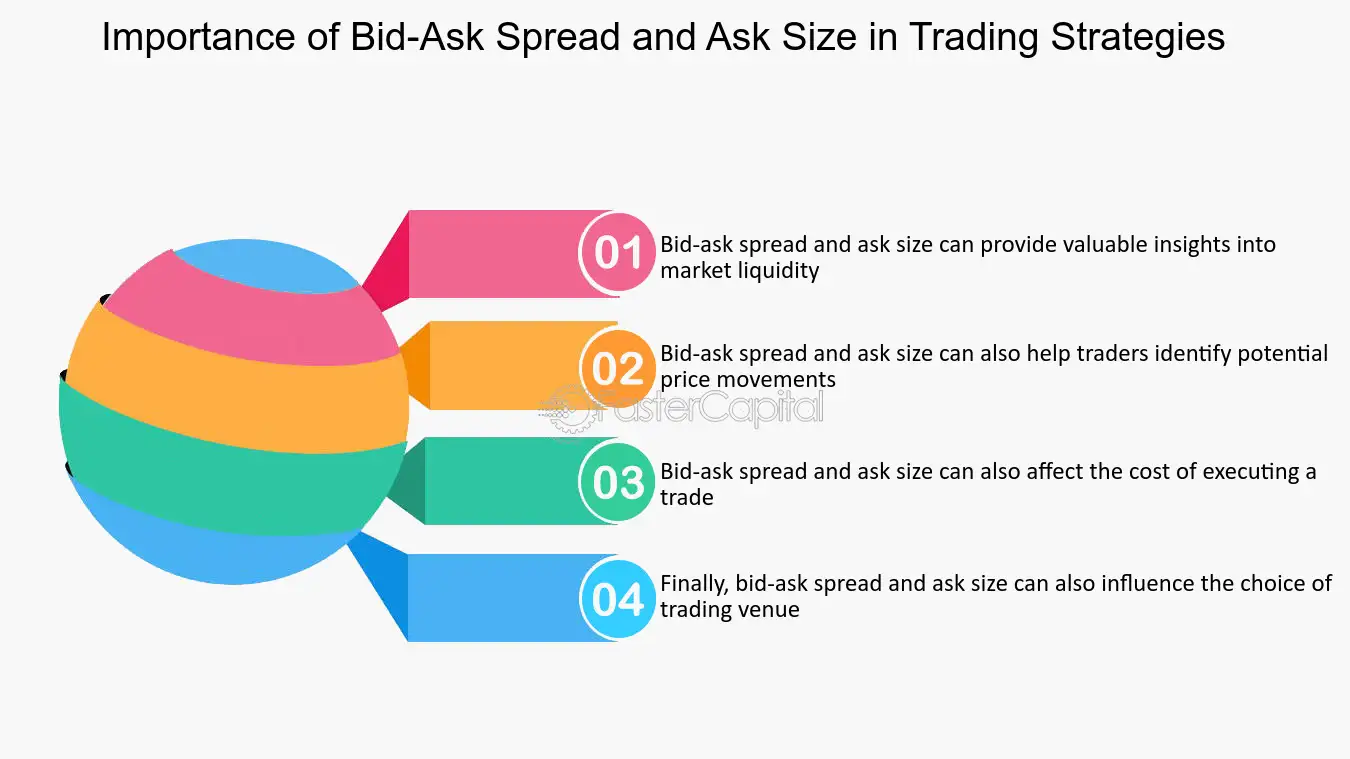Did you know that the bid-ask spread can sometimes be as wide as your Aunt Edna's jokes? In the world of trading, understanding market microstructure is crucial for navigating bid-ask spreads and price movements. This article dives deep into how market microstructure influences bid-ask spreads, the role of liquidity, and the impact of various order types. We’ll explore the relationship between trading volume and price fluctuations, examine how market makers determine prices, and discuss how factors like information asymmetry and order book depth affect price stability. Additionally, we’ll touch on the influence of trading venues, high-frequency trading strategies, and macroeconomic news releases on spreads. Lastly, we will look at how regulatory rules and market conditions during volatile periods can alter these dynamics. Let DayTradingBusiness guide you through these essential concepts to enhance your trading strategy.
How does market microstructure influence bid-ask spreads?
Market microstructure directly influences bid-ask spreads by shaping how traders execute orders, the liquidity available, and the information asymmetry in the market. Higher trading costs, lower liquidity, or greater uncertainty lead to wider spreads, as market makers compensate for increased risk. When markets are efficient with active participants and transparent information, spreads narrow because supply and demand are balanced. Conversely, in less liquid or more volatile markets, spreads widen to protect market makers from potential losses. Price movements are also affected: microstructure features like order flow and trading volume determine how quickly prices respond to new information.
What role does liquidity play in bid-ask spread variation?
Liquidity directly influences bid-ask spread variation; higher liquidity narrows spreads because it's easier to buy or sell without impacting price, while lower liquidity widens spreads as traders face more risk and uncertainty. When market liquidity drops, bid-ask spreads widen, reflecting increased transaction costs and reduced trading activity. Conversely, abundant liquidity tightens spreads, enabling quicker, cheaper trades. This dynamic affects price movements—wider spreads often signal less efficient markets and higher volatility, while narrower spreads suggest better market depth and stability.
How do order types impact bid-ask spreads?
Order types influence bid-ask spreads by affecting liquidity and trading behavior. Market orders usually widen spreads because they execute immediately, consuming liquidity. Limit orders narrow spreads by adding depth to the order book, signaling a willingness to trade at specific prices. Stop and stop-limit orders can cause sudden spread widening during volatile moments. The mix of order types shapes how quickly prices move and how tight or wide the spreads stay.
How does trading volume affect price movements?
Higher trading volume usually narrows bid-ask spreads because more buyers and sellers are actively trading, making it easier to match orders. When volume spikes, prices tend to move more quickly and with less volatility since there's enough liquidity to absorb large trades. Low trading volume widens spreads and can cause erratic price swings, as fewer participants mean each trade impacts the price more. In essence, increased trading volume stabilizes prices and tightens spreads, while low volume leads to volatile, less predictable price movements.
What is the relationship between bid-ask spreads and market volatility?
Higher market volatility usually widens bid-ask spreads because traders demand more compensation for increased risk, making it costlier to buy or sell quickly. When prices swing sharply, liquidity providers spread out their quotes to protect against rapid price changes. This wider spread reflects uncertainty and reduces trading efficiency, amplifying price movements. Conversely, in calm markets with low volatility, spreads narrow as liquidity is abundant and risk is lower, leading to more stable prices.
How do market makers set bid and ask prices?
Market makers set bid and ask prices based on supply and demand, using their inventory, market conditions, and risk tolerance. They observe current trades, order flow, and recent price movements to adjust quotes, aiming to profit from the spread while managing inventory risk. Their goal is to provide liquidity by offering buy (bid) and sell (ask) prices that reflect the market’s current state, narrowing or widening spreads depending on volatility and trading activity.
How does information asymmetry affect bid-ask spreads?

Information asymmetry widens bid-ask spreads because informed traders have better knowledge than uninformed ones. Market makers charge higher spreads to protect themselves from trading with those who know more. When info asymmetry is high, spreads grow, making trading more costly for retail investors. This delay in information sharing causes less liquidity and larger spreads, impacting overall market efficiency.
What impact does order book depth have on price stability?
Deeper order books create more liquidity, reducing price volatility and making prices more stable. When large buy or sell orders are present, they absorb shocks and limit sudden price swings. Shallow order books, with fewer orders, lead to bigger price jumps and less stability because small trades can move the price significantly. Overall, greater order book depth dampens sharp price movements and enhances market stability.
How do different trading venues influence bid-ask spreads?

Different trading venues impact bid-ask spreads by their liquidity and trading volume. Centralized exchanges typically have narrower spreads due to high liquidity, while over-the-counter (OTC) markets often show wider spreads because of lower transparency and trading activity. Electronic limit order books offer real-time depth, reducing spreads as more orders compete, whereas dark pools hide order flow, sometimes widening spreads. Market microstructure factors like order flow, presence of market makers, and trading regulation directly shape how tight or wide bid-ask spreads are.
How do high-frequency trading strategies affect spreads and prices?
High-frequency trading narrows bid-ask spreads by providing liquidity and quick price adjustments, making markets more efficient. It can also cause rapid price swings due to quick, automated trades, increasing short-term volatility. Overall, HFT sharpens price discovery and tightens spreads but can lead to sudden, momentary price jumps.
Learn about How News Events Affect Reversal Trading Strategies
How does market microstructure differ between stock and forex markets?
Market microstructure in stocks involves centralized exchanges with order books, leading to narrower bid-ask spreads and transparent price discovery. In forex, decentralized over-the-counter (OTC) trading causes wider spreads, less transparency, and more variable price movements. Stocks often have high liquidity and regulated trading hours, while forex’s 24-hour trading impacts spread fluctuations and liquidity dynamics. This microstructure difference influences how bid-ask spreads react to news and how quickly prices adjust in each market.
What is the effect of transaction costs on trading behavior?
Transaction costs widen bid-ask spreads, making traders hesitant to buy or sell quickly. Higher costs discourage frequent trading, leading to less liquidity and slower price adjustments. Traders often wait for better conditions, reducing market efficiency and increasing volatility during wider spreads.
Learn about The Effect of Transaction Costs on Day Trading Profitability
How do bid-ask spreads reflect market efficiency?
Bid-ask spreads indicate market efficiency by showing how quickly and accurately prices reflect available information. Narrow spreads suggest high efficiency, with prices adjusting rapidly and trading costs low. Wide spreads point to lower efficiency, signaling higher transaction costs and less transparent pricing. When spreads tighten, it means markets are more liquid and microstructure supports efficient price discovery. Conversely, wider spreads often occur in less liquid markets, delaying price adjustments and reflecting uncertainty or higher risk.
How do macroeconomic news releases impact bid-ask spreads?

Macroeconomic news releases increase market volatility, causing bid-ask spreads to widen as traders become more cautious and liquidity drops. During major news, market makers widen spreads to manage risk, making it costlier to buy or sell. Quick, sharp price moves after news can also lead to wider spreads due to uncertainty and increased order flow. Overall, macroeconomic releases temporarily reduce liquidity, making spreads more volatile and less predictable.
How does market microstructure change during volatile periods?
During volatile periods, market microstructure tightens bid-ask spreads as traders become more cautious and liquidity providers adjust for higher risk. Bid-ask spreads often widen initially due to uncertainty, making trading costlier. Price movements accelerate, with spreads fluctuating rapidly as market depth thins. Traders switch to more cautious strategies, leading to less order flow stability. Overall, volatility causes spreads to fluctuate more and reduces market efficiency, amplifying price swings.
How do regulatory rules influence bid-ask spreads?
Regulatory rules limit certain trading practices, increasing the cost and complexity of executing trades. This can widen bid-ask spreads because market makers face higher compliance costs and risk. Regulations like minimum capital requirements or restrictions on order types reduce liquidity and competition, making it more expensive to match buyers and sellers. As a result, bid-ask spreads grow wider, reflecting increased trading costs and lower market efficiency.
Conclusion about How Does Market Microstructure Affect Bid-Ask Spreads and Price Movements?
In summary, understanding market microstructure is crucial for grasping the dynamics of bid-ask spreads and price movements. Factors such as liquidity, order types, trading volume, and information asymmetry all play significant roles in shaping these spreads. Additionally, elements like market makers, trading venues, and high-frequency trading strategies further complicate the landscape. As you navigate these complexities, leveraging insights from experts can enhance your trading strategies. For comprehensive guidance and in-depth analysis, rely on DayTradingBusiness to stay informed and improve your trading outcomes.
Learn about How Market Microstructure Explains Price Gaps and Jumps